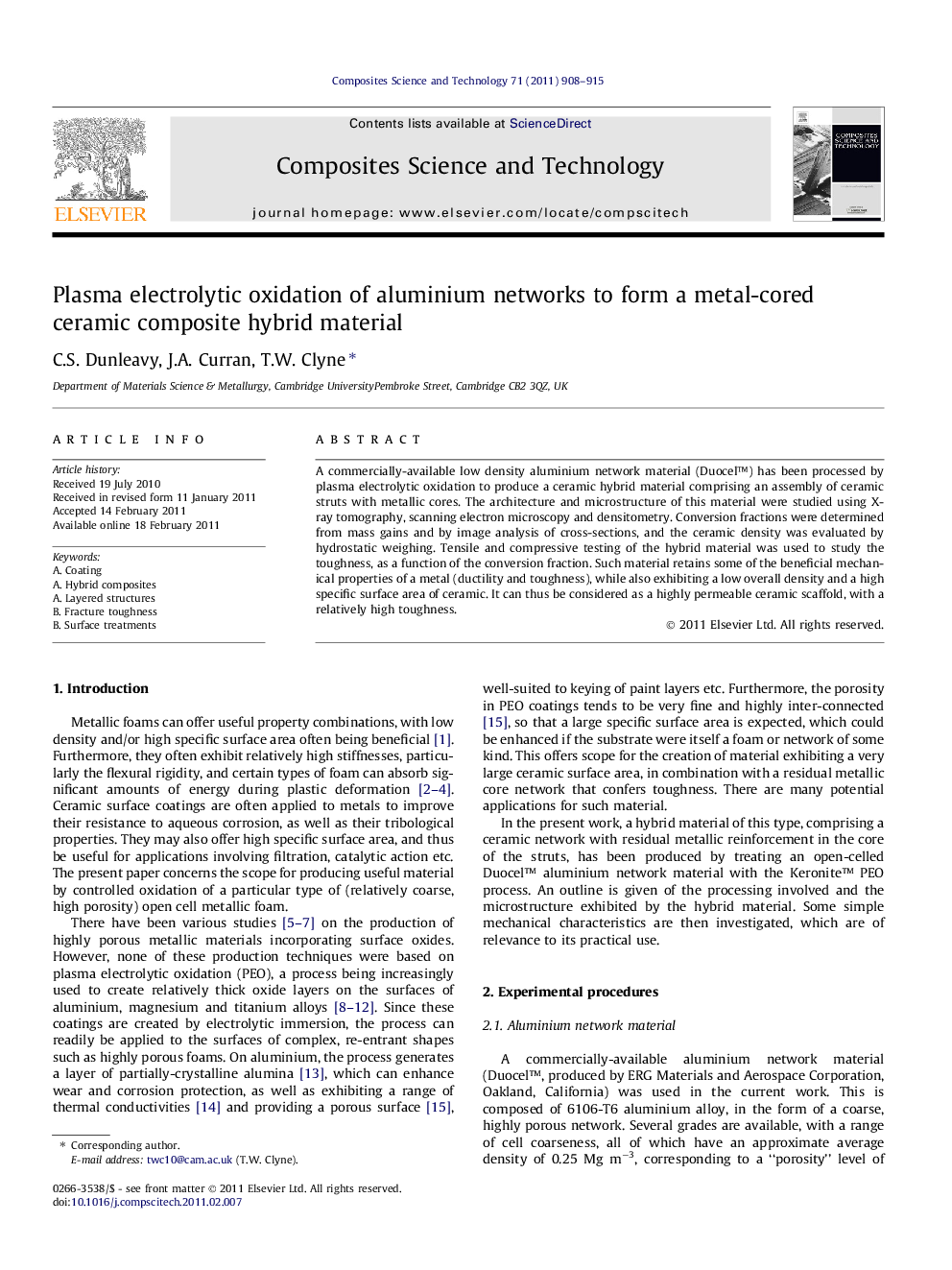| Article ID | Journal | Published Year | Pages | File Type |
|---|---|---|---|---|
| 820971 | Composites Science and Technology | 2011 | 8 Pages |
A commercially-available low density aluminium network material (Duocel™) has been processed by plasma electrolytic oxidation to produce a ceramic hybrid material comprising an assembly of ceramic struts with metallic cores. The architecture and microstructure of this material were studied using X-ray tomography, scanning electron microscopy and densitometry. Conversion fractions were determined from mass gains and by image analysis of cross-sections, and the ceramic density was evaluated by hydrostatic weighing. Tensile and compressive testing of the hybrid material was used to study the toughness, as a function of the conversion fraction. Such material retains some of the beneficial mechanical properties of a metal (ductility and toughness), while also exhibiting a low overall density and a high specific surface area of ceramic. It can thus be considered as a highly permeable ceramic scaffold, with a relatively high toughness.
